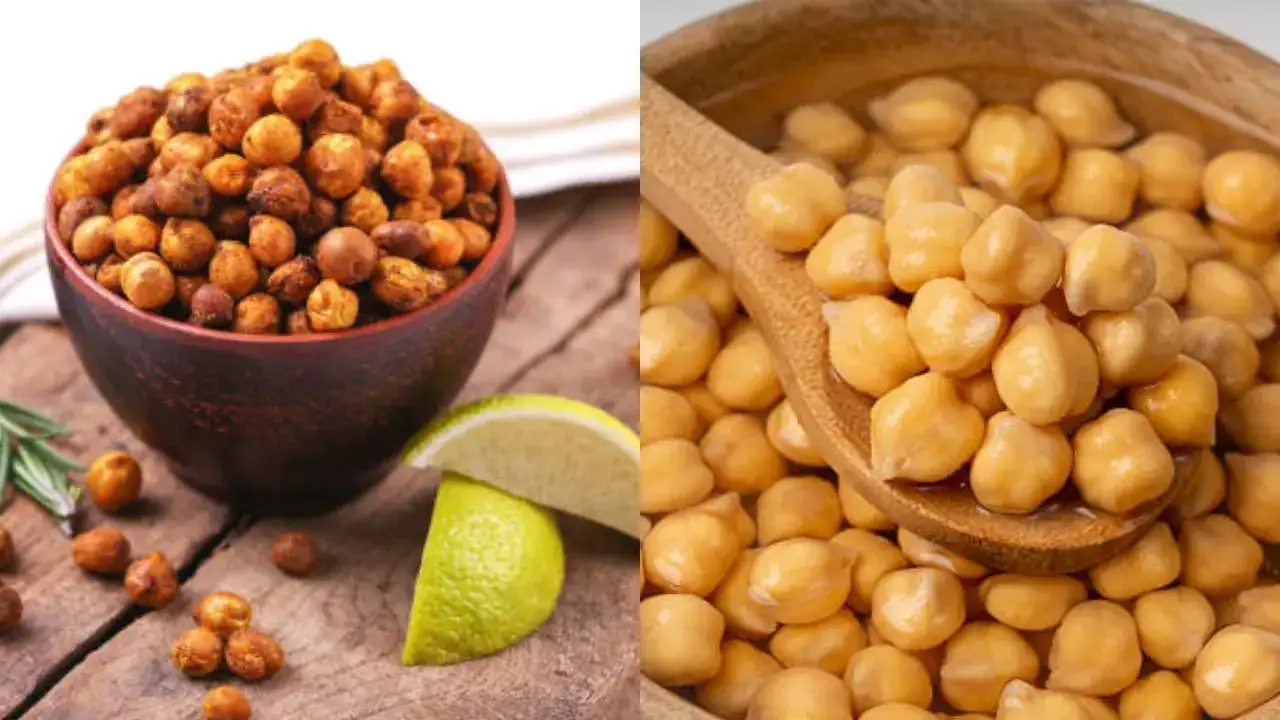
Roasted VS. Soaked Chickpeas: Which One’s Healthier And Why? (Image Credits: iStock)
Chickpeas, or garbanzo beans, are a powerhouse of nutrition and a staple in many diets worldwide. Rich in protein, fibre, vitamins, and minerals, they are a popular choice among health enthusiasts, especially vegetarians and vegans. While chickpeas can be consumed in various forms, two common ways are roasted and soaked. But which one is healthier?
Nutritional ComparisonSoaked chickpeas are raw chickpeas that have been soaked in water for several hours or overnight. This process helps activate enzymes, improve digestibility, and reduce anti-nutrients like phytic acid, which can block the absorption of minerals such as iron, zinc, and calcium.
On the other hand, roasted chickpeas are typically cooked and then dry-roasted, making them crunchy and easy to snack on. Roasting preserves most of the nutrients while enhancing shelf life and flavour. However, the high heat may degrade certain heat-sensitive vitamins like vitamin C and some B vitamins.
According to the USDA, 100 grams of soaked (raw) chickpeas contain:
Protein: 8.9g
Fibre: 7.6g
Fat: 2.6g
Carbohydrates: 27.4g
Whereas 100 grams of roasted chickpeas provide:
Protein: 20g
Fibre: 17g
Fat: 6g
Carbohydrates: 60g
The data clearly shows that roasted chickpeas are more calorie-dense and have higher protein and fibre content per gram, mainly because roasting removes water, concentrating the nutrients.
Digestibility and Absorption
Soaking chickpeas before consumption helps break down complex sugars (oligosaccharides) responsible for bloating and gas, making them easier on the stomach. The soaking process also helps remove certain enzyme inhibitors and improves the bioavailability of nutrients like iron and zinc.
Roasting, while not harmful, doesn’t remove anti-nutrients to the same extent. Some people may find roasted chickpeas harder to digest, especially in large quantities.
Satiety and Weight ManagementRoasted chickpeas, due to their crunch and higher fibre and protein content promote a feeling of fullness and can curb unhealthy snacking. A study published in Appetite (2016) found that consuming chickpea-based snacks significantly reduced calorie intake later in the day.
However, because roasted chickpeas are energy-dense, portion control is key. A handful can be a great high-protein snack, but overindulgence may add extra calories.
Verdict: Which One Is Healthier?
Both forms have their unique benefits, but the healthier option depends on your goals:
For weight loss and better digestion: Soaked chickpeas are lighter, lower in calories, and easier on the gut.
Both soaked and roasted chickpeas are healthy, but choosing the right one depends on your personal dietary needs.
Get Latest News Live on Times Now along with Breaking News and Top Headlines from Health and around the world.
